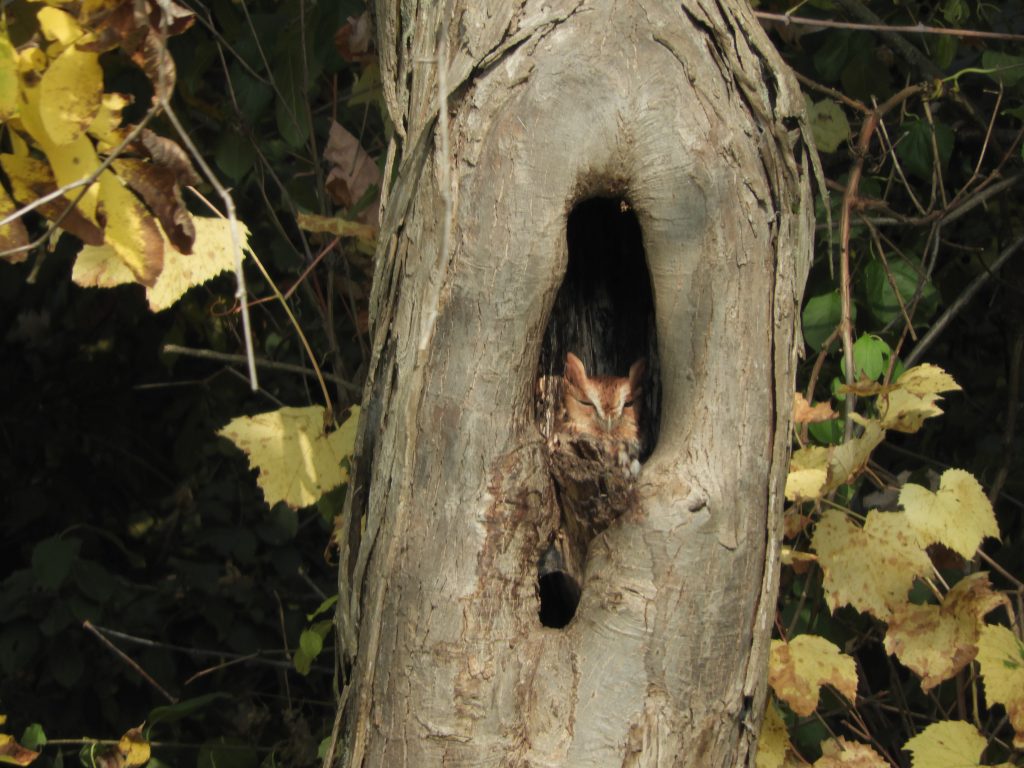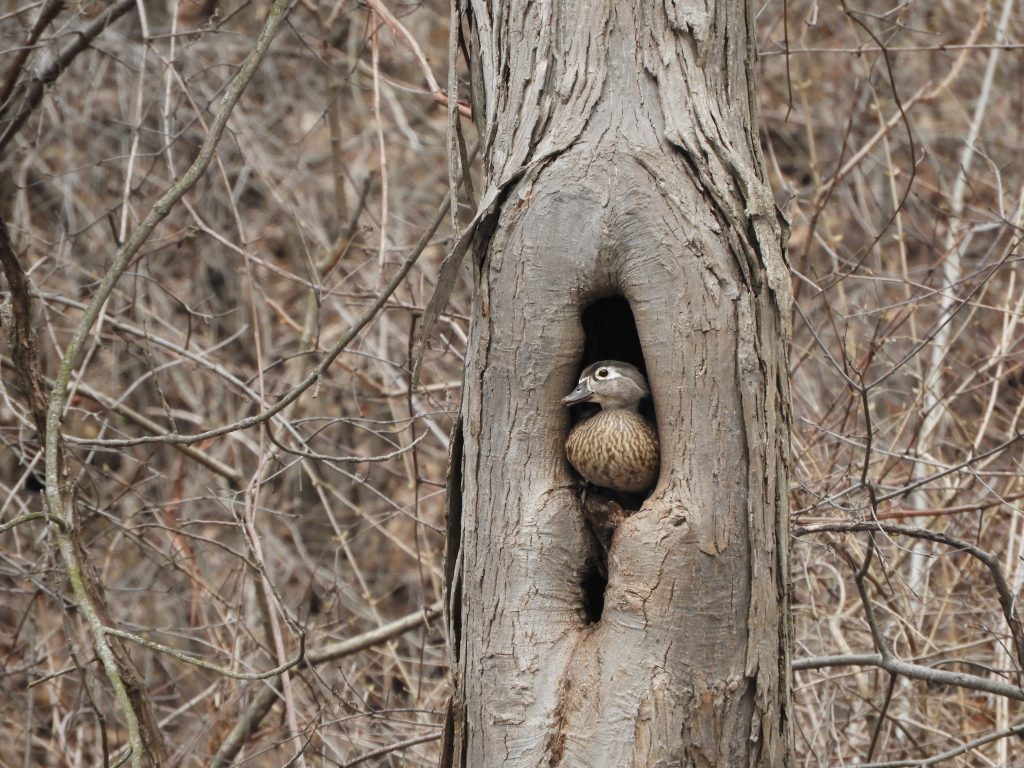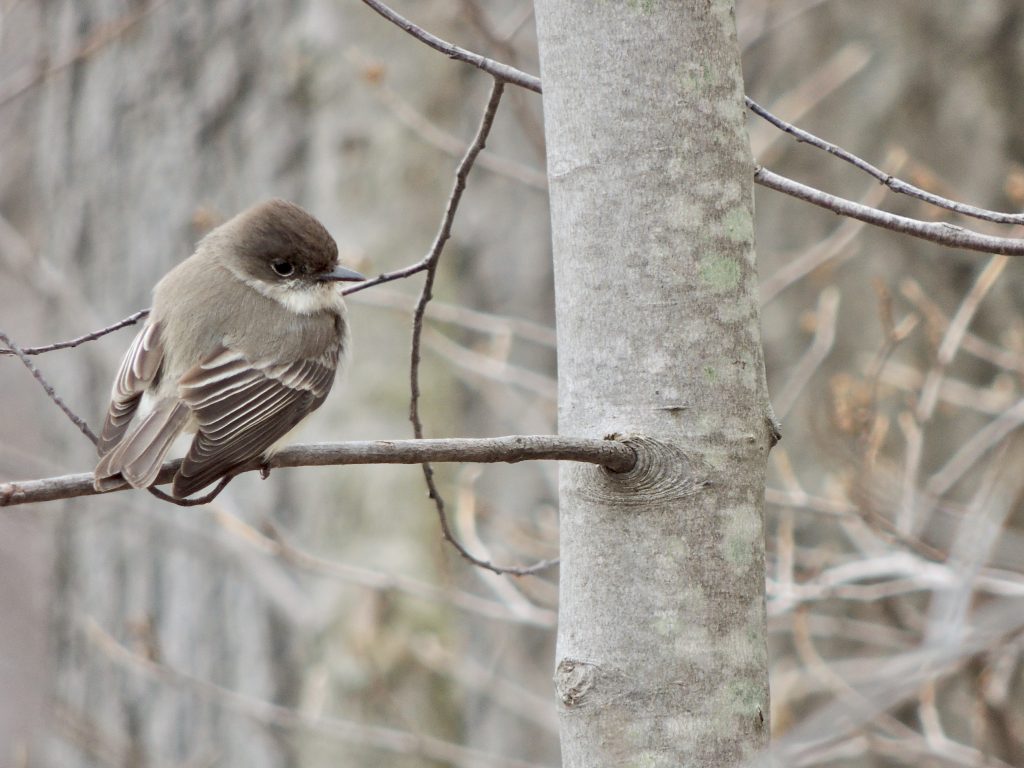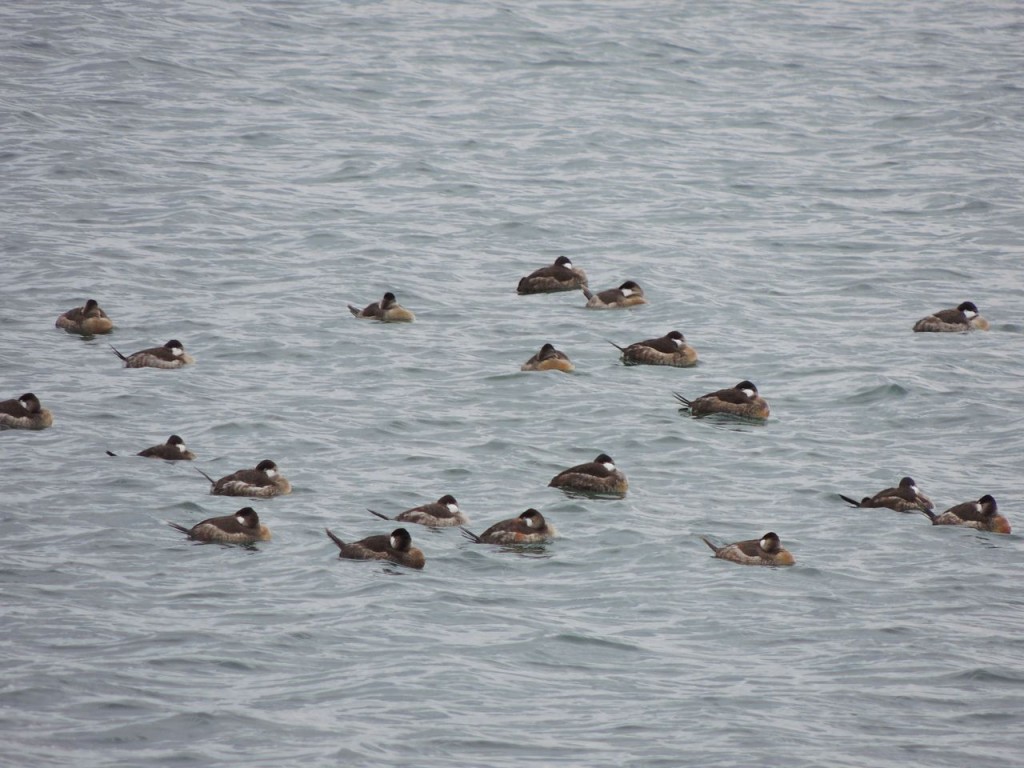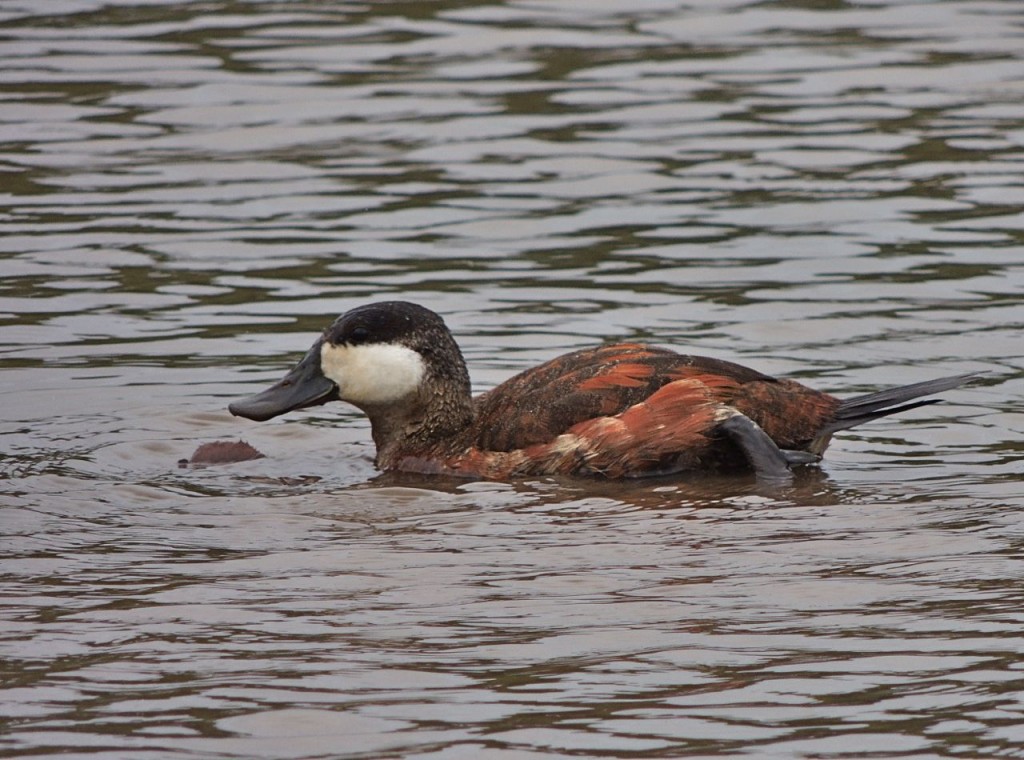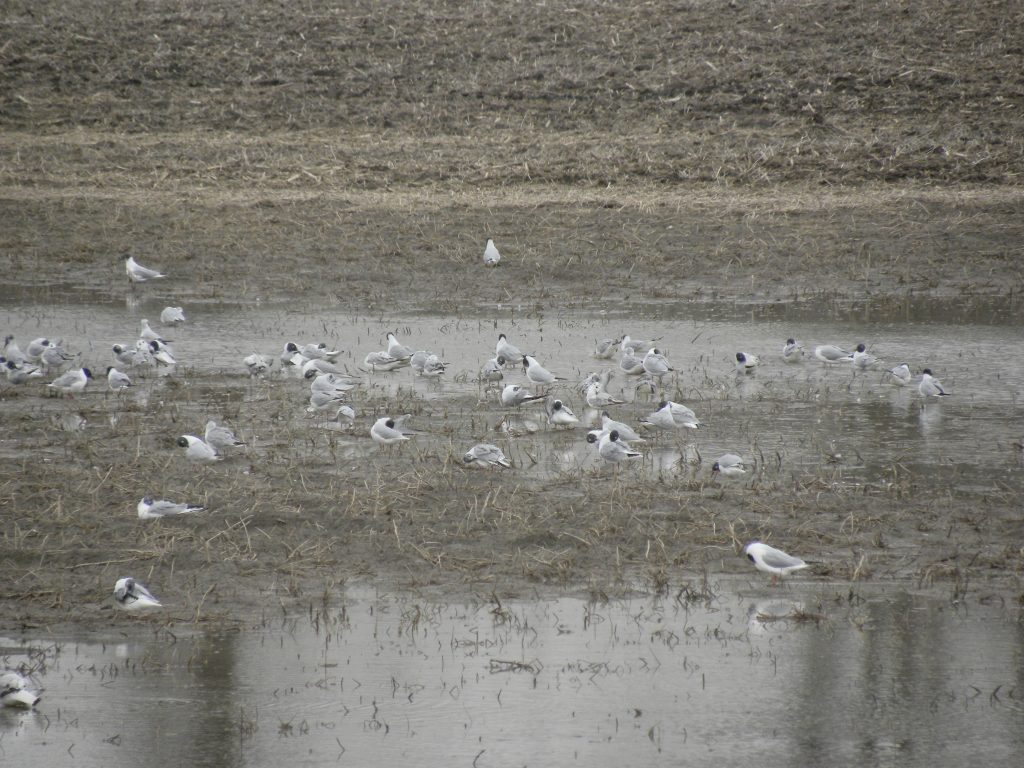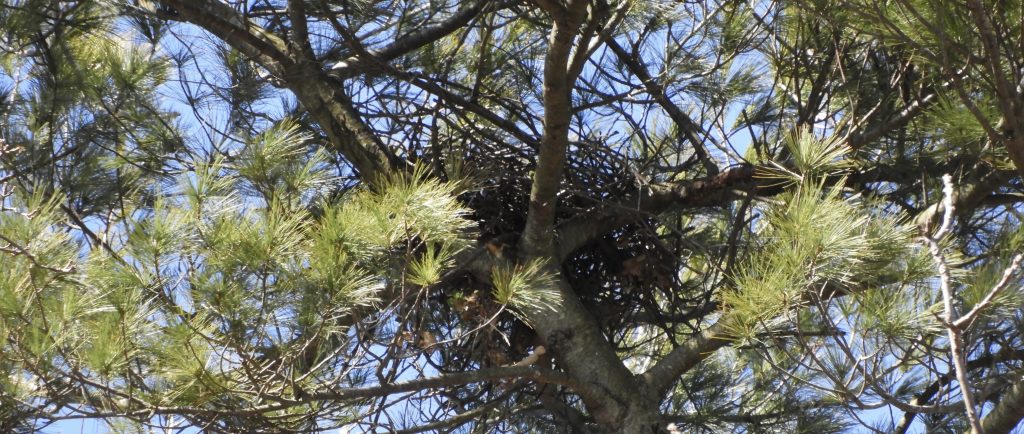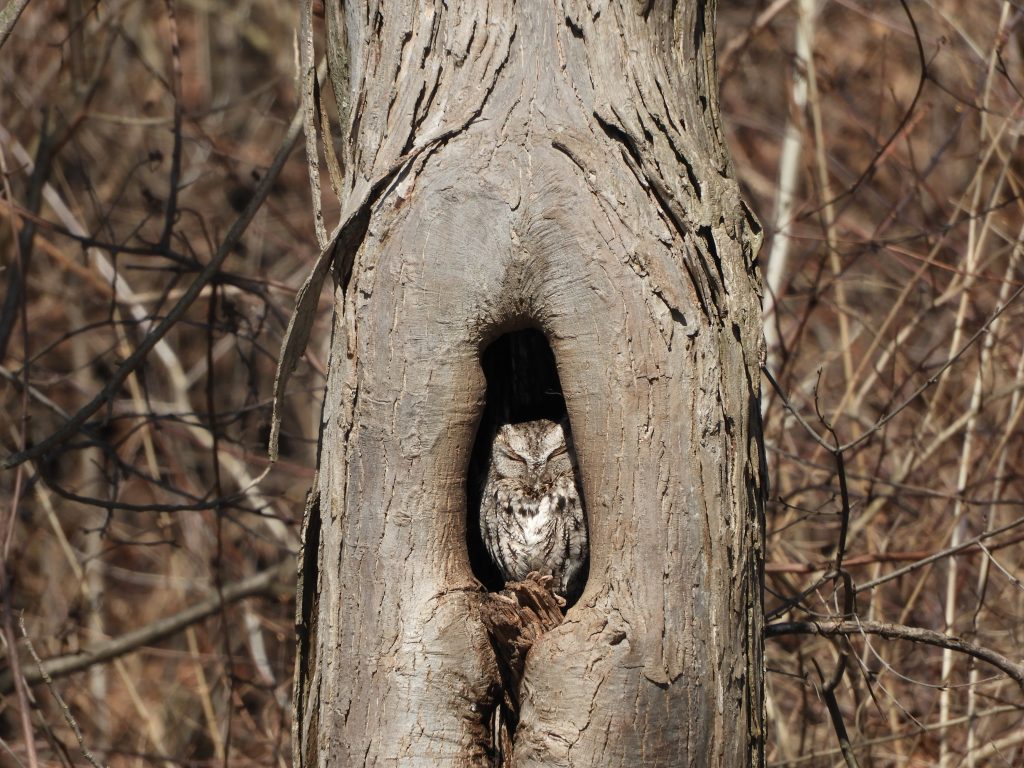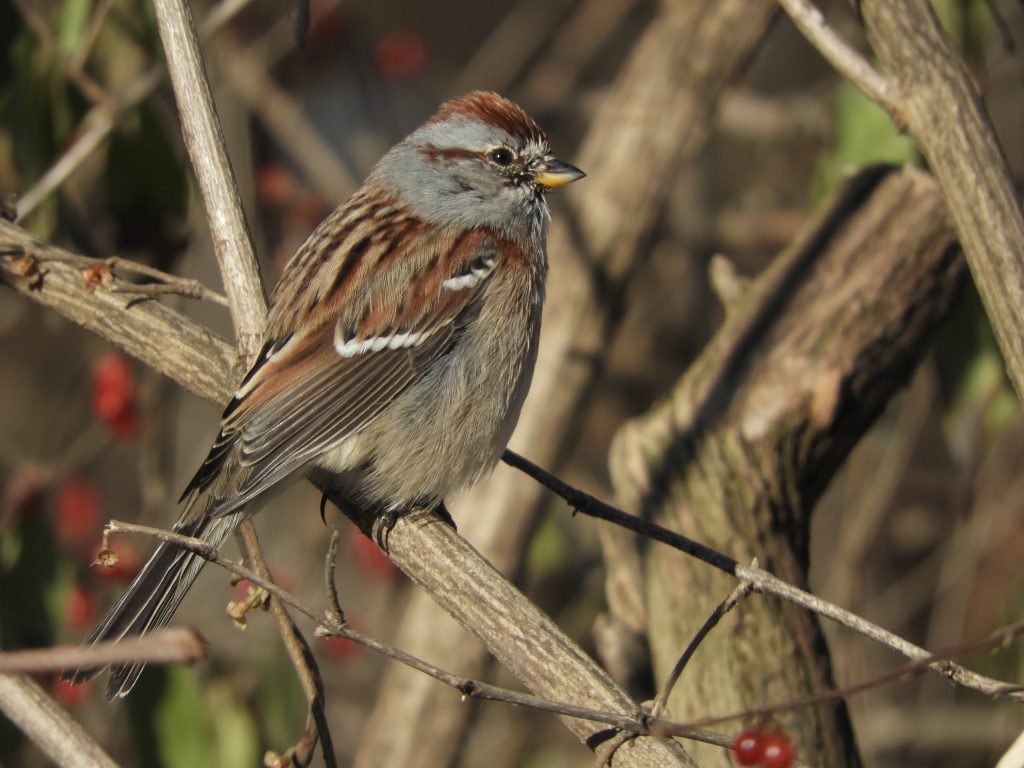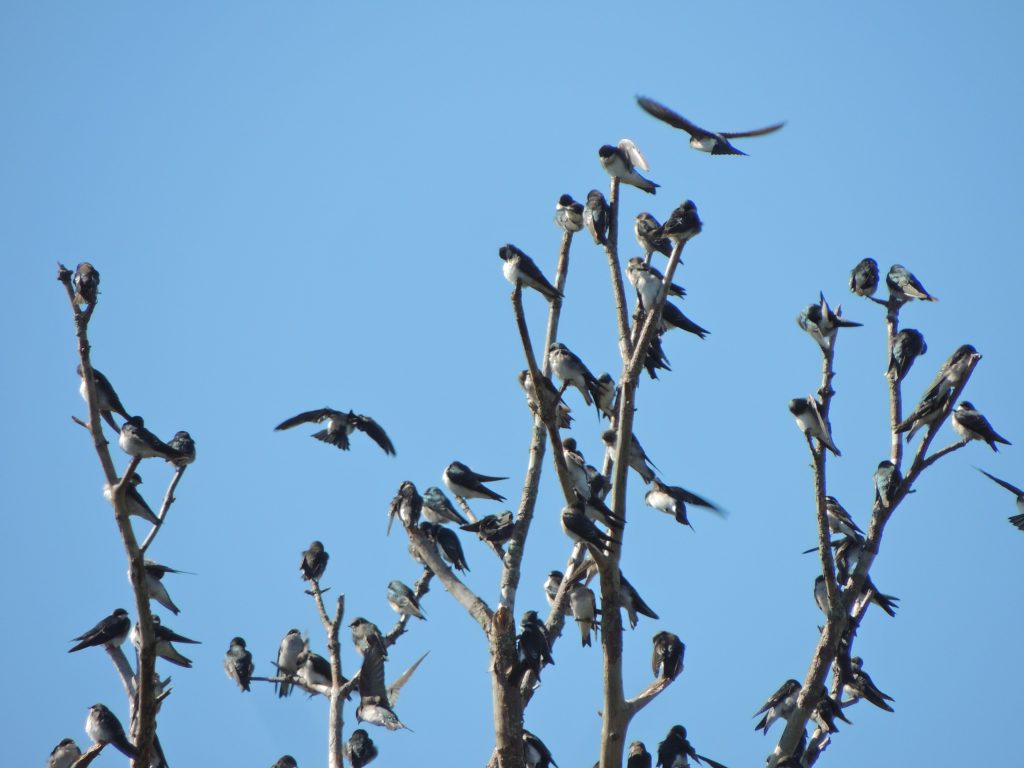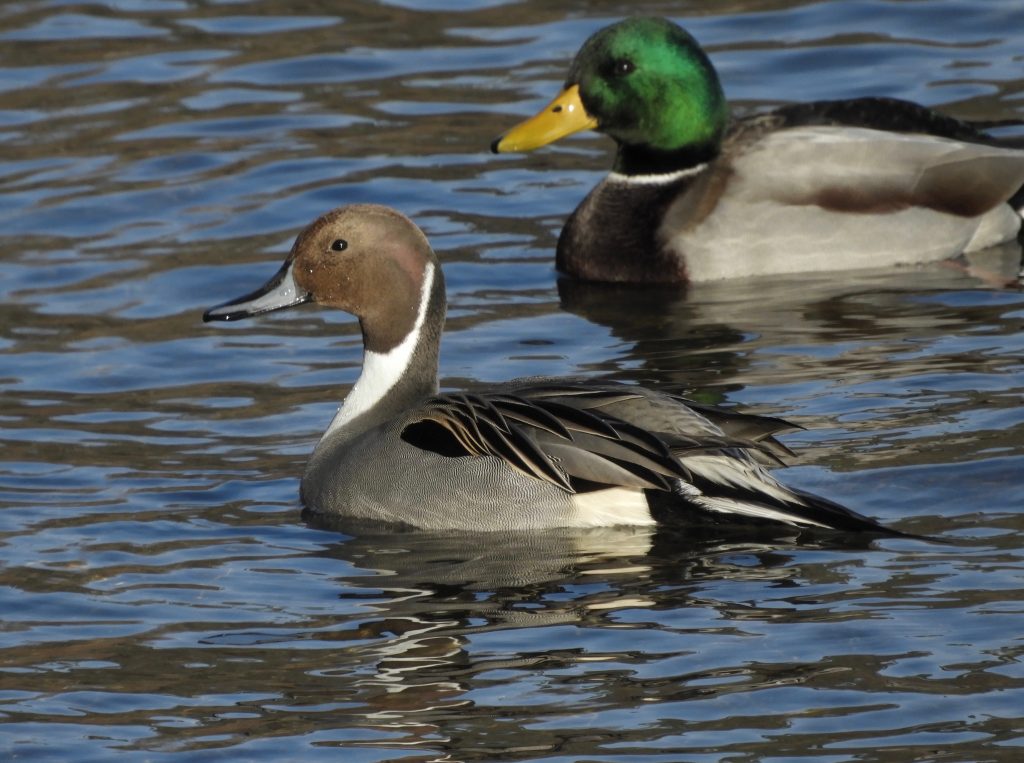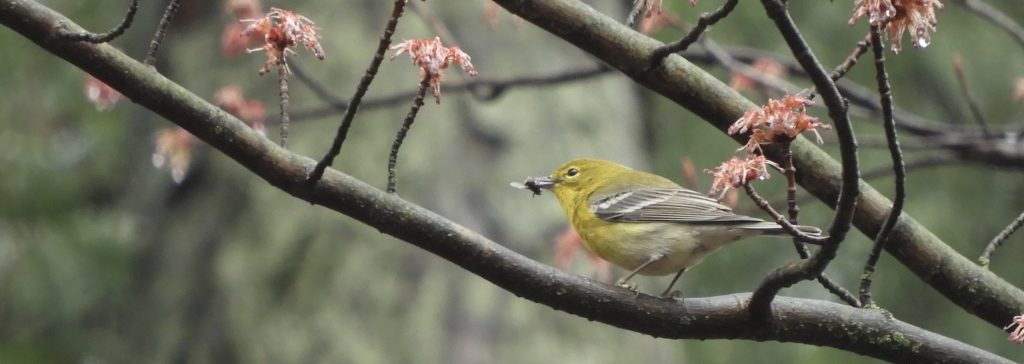
April 21. 2025. Royal Botanical Gardens, Hamilton, ON. Canada. April can be such a tease, it promises so much but delivers too little too often. School days’ geography lessons taught me about our continental climate: “….characterized by significant annual temperature variations, with cold winters and warm to hot summers, and typically found in the interior of continents, away from the moderating influence of oceans.” Well, that’s us and the more you read about them the more subsets of continental climates you’ll find.
Two early mornings of birding have turned up some spring arrival delights. Yesterday I walked some hilly trails and, trudging my way up a mid-winter toboggan hill cut through thick brush, I could hear White-throated Sparrows and Ruby–crowned Kinglets whispering among themselves, and then spotted a little movement of pale yelllow in the undergrowth. It soon emerged to surprise me as a Pine Warbler. I patted myself on the back for identifying it because we don’t associate Pine Warblers with undergrowth – rather we usually only hear them unseen among the upper levels of White Pines. So, this was a lovely sighting, albeit brief. Then I came to realize there were many more of them on either side of the toboggan run, I counted five or six, and they were all singing, staying in touch. Pine Warblers sing a short, sweet if somewhat dry trill, like that of a Chipping Sparrow. Those three: sparrows, kinglets and Pine Warblers, were all in the same area and a little later several Yellow–rumped Warblers, firsts of the year, appeared and I warmly welcomed them too. They all must have swept in overnight on a wave of warm weather, evidence that winter is on its way out, and it went through my head that the Pine Warbler would surely be My Bird of the Day, but then other stuff crowded in.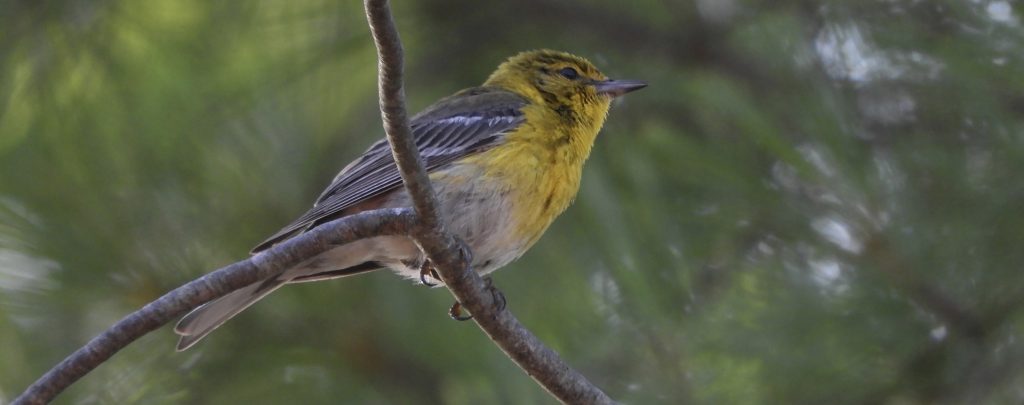 Pine Warbler mid summer
Pine Warbler mid summer
Today winter let me know it is not leaving without a fight. With cold rain threatening I hastened around a different series of trails. Perhaps because of my haste it was not great birding; never mind, it was good for the soul.
We hear much about nature as a cure. “ …The idea that as people, especially children, spend less time outdoors than formerly, this contributes to a range of mental and physical issues like attention deficit disorders and obesity.” I don’t need persuading. A case in point was hearing and then finding a Brown Thrasher this morning, it topped-up my reservoir of bird-song goodwill. There was plenty of background clatter: Red-winged Blackbirds, American Robins, the wind, and distant road traffic, but through it all, fighting to be heard, came a familiar song.
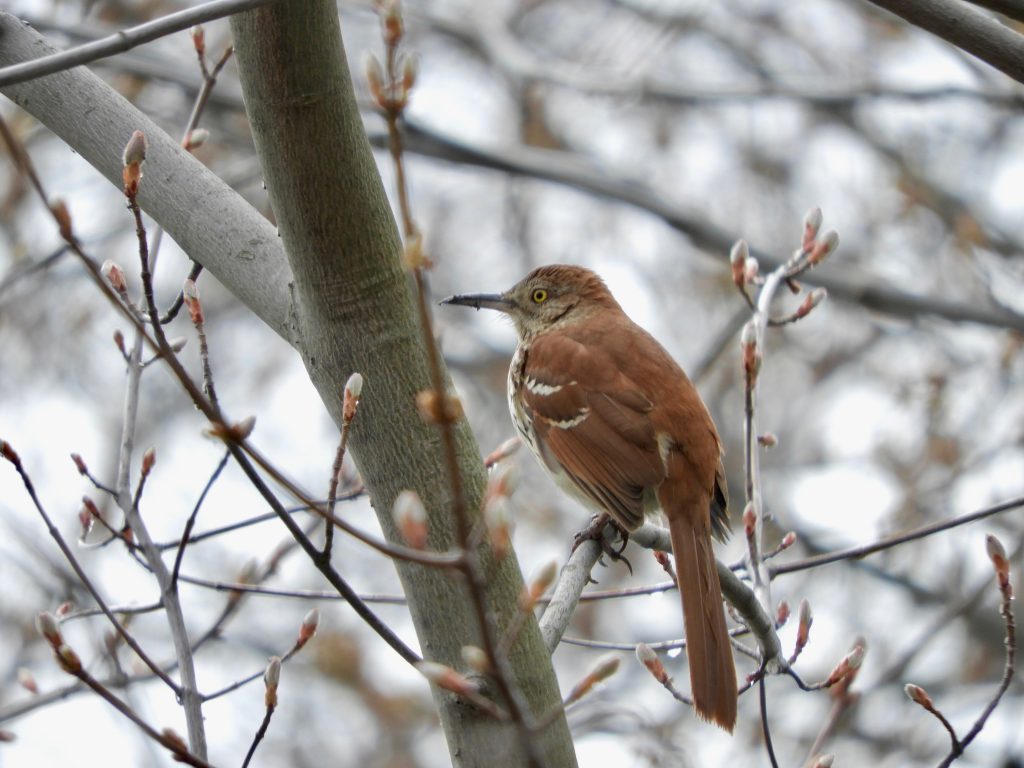
I mentally reached for it: Northern Mockingbird I wondered? Uncommon but possible; Perhaps a Gray Catbird? Also possible but not quite; Then gradually I picked out the clear phrases of a Brown Thrasher. I turn to Cornell Lab of Ornithology for this description of its song, “Apart from being variably inventive the song is distinctive for usually having each phrase uttered twice, rather famously described as: “plant-a-seed, plant-a-seed, bury-it, bury-it, cover-it-up, cover-it-up, let-it-grow, let-it-grow, pull-it-up, pull-it-up, eat-it, eat-it, yum-yum”.
It took a minute or two and a bit of care working around some old fallen fence wire, but finally I managed to get a good long look at the bird. For me it was a raw blustery day but apparently the thrasher didn’t mind. Flying from bare treetop to open shrub it was just delivering its song and was My Bird of the Day.
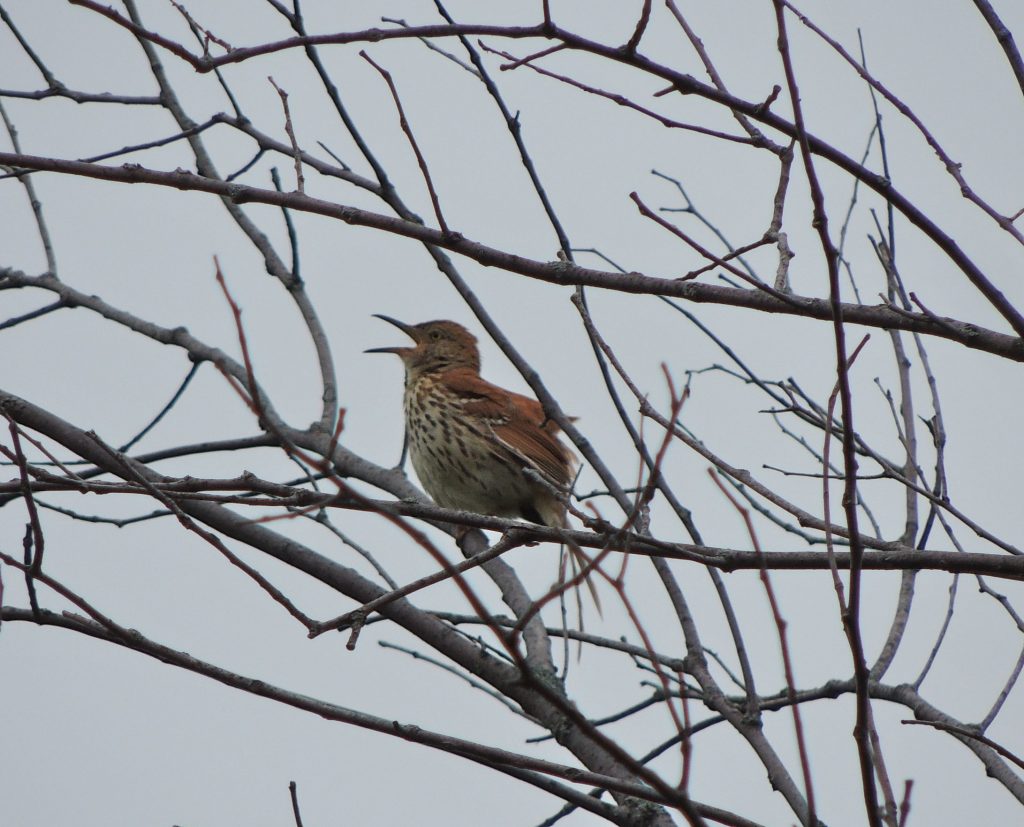
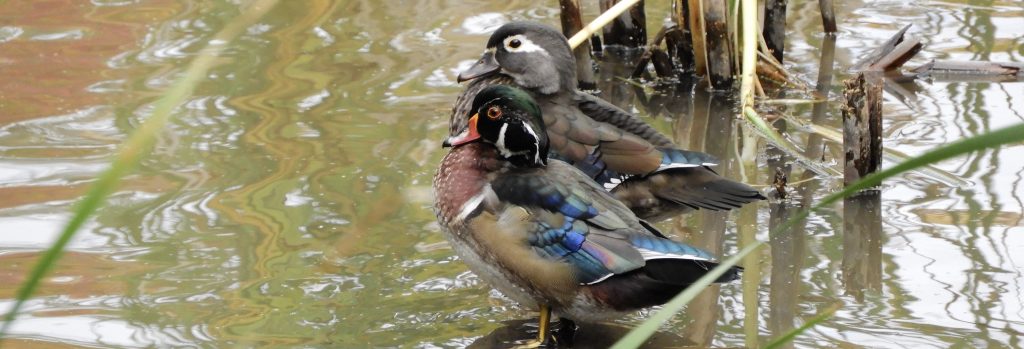
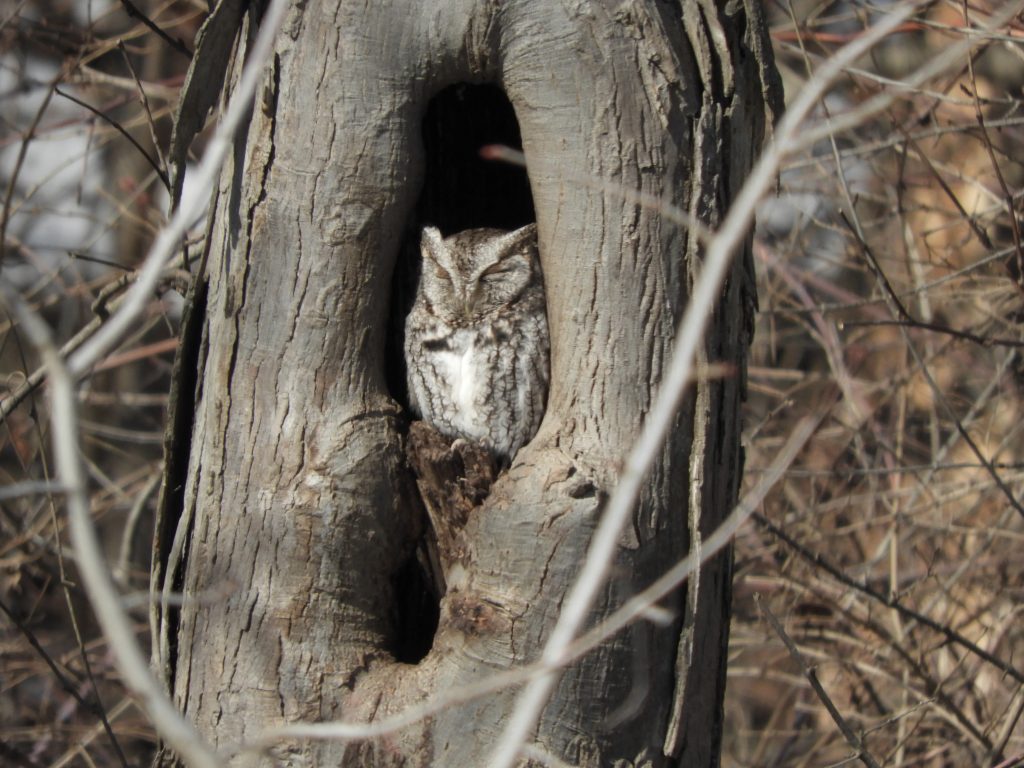 Always a screech owl, always regarding the world from the same hole in a tree, but not necessarily the same bird. It intrigues me to know there has been more than one individual. Eastern Screech Owls come in two colour choices, grey and rufous-red. Usually we see a grey individual but every now and then it’s a rufous one. I’m a bit baffled.
Always a screech owl, always regarding the world from the same hole in a tree, but not necessarily the same bird. It intrigues me to know there has been more than one individual. Eastern Screech Owls come in two colour choices, grey and rufous-red. Usually we see a grey individual but every now and then it’s a rufous one. I’m a bit baffled.